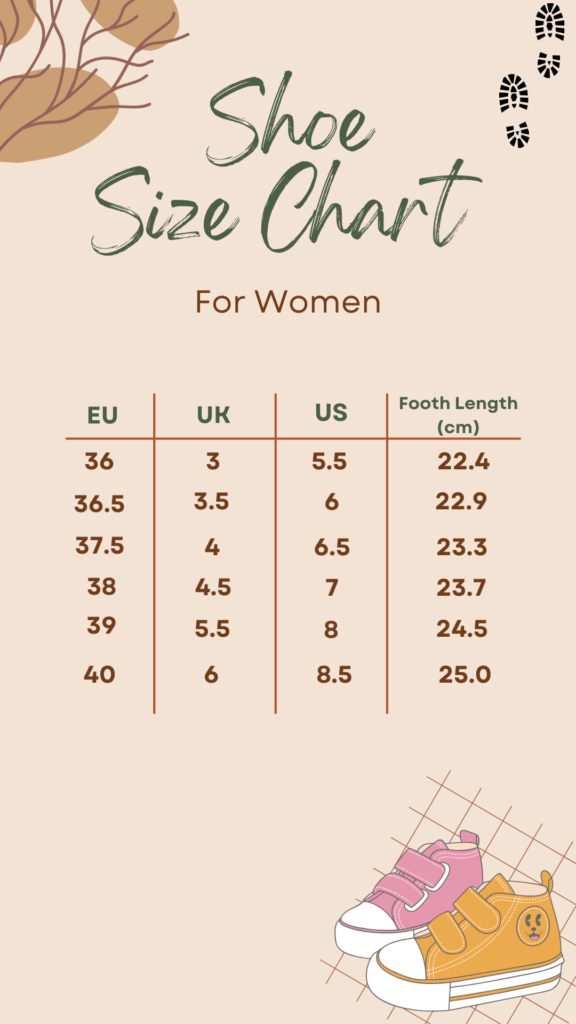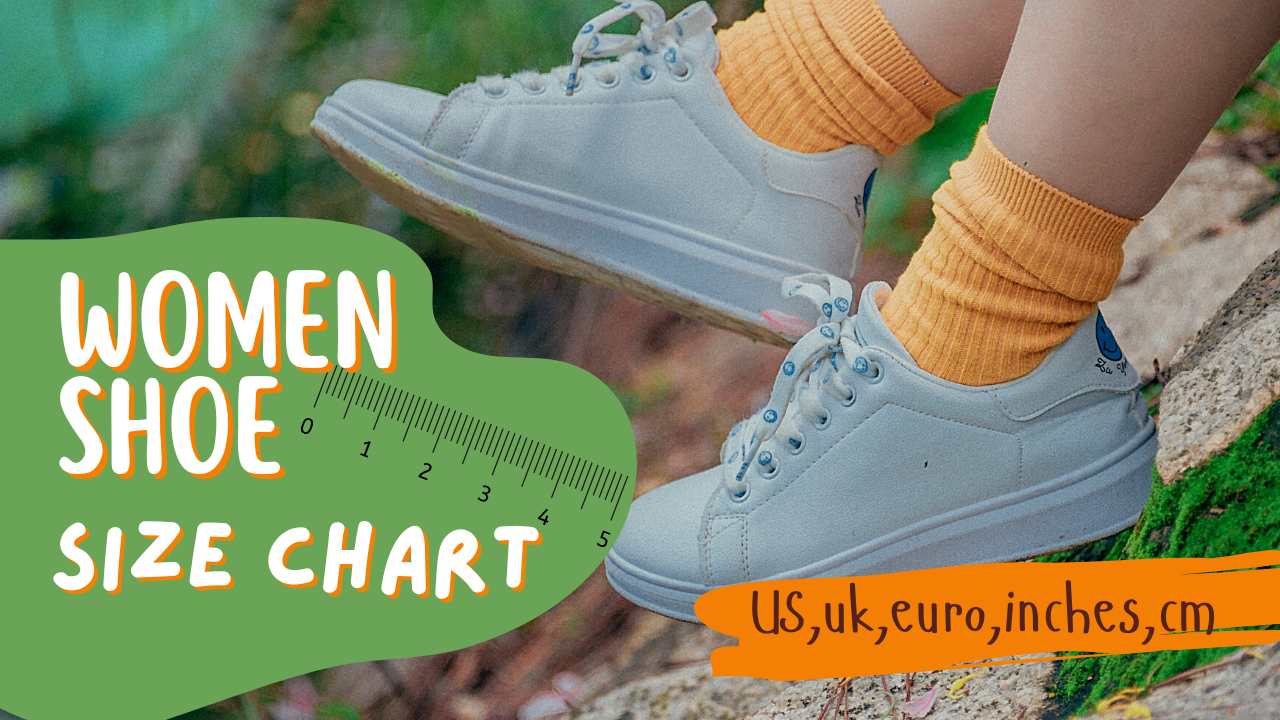The world of women’s footwear is diverse and ever-evolving, and at the heart of this realm lies the intricate concept of shoe sizes. Beyond mere numbers, women shoe sizes embody a blend of tradition, fashion, and biomechanics, reflecting the unique characteristics of each individual. This article delves into the fascinating world of women’s shoe sizes, exploring the factors influencing sizing standards, the challenges consumers face, and the evolving landscape of inclusivity in the footwear industry.
The History of Women’s Shoe Sizes:
According to records, standardized shoe sizes have a long history; they were initially adopted in England in the 14th century. However, more uniform sizing guidelines started to appear in the 19th century. There is little agreement in the world’s sizing systems because different nations and areas have adopted their own over time.
The Brannock Device, invented in 1927, revolutionized the measurement of foot length and width, providing a standardized tool for determining shoe sizes Chart. While this device improved accuracy, variations persisted across brands and countries. Women’s shoe sizes, in particular, have been subject to diverse sizing charts, making it challenging for consumers to find the perfect fit.
| US | UK | Europe | Inches | Centimeters |
|---|---|---|---|---|
| 4 | 2 | 35 | 8.2 | 20.8 |
| 4.5 | 2.5 | 35 | 8.3 | 21.3 |
| 5 | 3 | 35-36 | 8.5 | 21.6 |
| 5.5 | 3.5 | 36 | 8.8 | 22.2 |
| 6 | 4 | 36-37 | 8.9 | 22.5 |
| 6.5 | 4.5 | 37 | 9.1 | 23 |
| 7 | 5 | 37-38 | 9.3 | 23.5 |
| 7.5 | 5.5 | 38 | 9.4 | 23.8 |
| 8 | 6 | 38-39 | 9.5 | 24.1 |
| 8.5 | 6.5 | 39 | 9.7 | 24.6 |
| 9 | 7 | 39-40 | 9.9 | 25.1 |
| 9.5 | 7.5 | 40 | 10 | 25.4 |
| 10 | 8 | 40-41 | 10.2 | 25.9 |
| 10.5 | 8.5 | 41 | 10.3 | 26.2 |
| 11 | 9 | 41-42 | 10.5 | 26.7 |
| 11.5 | 9.5 | 42 | 10.7 | 27.1 |
| 12 | 10 | 42-43 | 10.9 | 27.6 |
Factors Influencing Women’s Shoe Sizes:
- Foot Anatomy: Women’s feet vary significantly in size and shape depending on age, lifestyle, and heredity. Arch length, breadth, and height differ considerably from person to person, adding to the difficulty of sizing.
- Brands and Sizing Discrepancies: Different shoe manufacturers often use their sizing charts, resulting in consistency. A woman may wear one size in a particular brand but need a different size in another, adding an element of unpredictability to the shoe-shopping experience.
- Fashion Trends and Design: Fashion plays a pivotal role in shaping the design and structure of women’s shoes. High heels, pointed toes, and narrow widths may look stylish but can impact comfort and sizing. Fashion-forward designs sometimes prioritize aesthetics over practicality, posing challenges for women seeking style and comfort.

Challenges Faced by Consumers:
- Online Shopping Dilemmas: Online shopping has transformed how consumers purchase footwear. However, the inability to physically try on shoes before buying can lead to sizing uncertainties, often resulting in the need for returns and exchanges.
- Vanity Sizing: Some brands use vanity sizing to boost self-esteem, which labels giant shoes with smaller sizes. While intended to flatter consumers, this practice can create confusion and frustration.
- Limited Size Ranges: Despite growing awareness of diverse body shapes and sizes, some brands offer narrow size ranges, excluding women with smaller or larger feet. This lack of inclusivity has sparked discussions about the importance of catering to a broader spectrum of sizes.
The Evolution of Inclusivity in Women’s Shoe Sizes:
In recent years, the footwear and fashion industries have seen a change in favour of increased inclusion. As societal standards and expectations shift, many firms realize the importance of catering to various body types and sizes. Extended size ranges, collections tailored to fit larger or narrower feet, and gender-inclusive sizing are examples of initiatives that are becoming increasingly common.
Brands like Nike, Adidas, and other major players are taking steps to address the unique needs of women with varying foot shapes. Customization options, where customers can personalize the fit of their shoes, are also gaining popularity, offering a bespoke solution to sizing challenges.
Practical Tips for Finding the Right Fit:
- Measure Regularly: Regularly measuring your feet, especially if you notice changes due to factors like age or pregnancy, can help you stay informed about your accurate size.
- Consider Width: Pay attention to width options offered by brands. Women with broader or narrower feet may find a more comfortable fit by exploring width options beyond the standard “B” width.
- Read Reviews: Before making an online purchase, read customer reviews to gain insights into the sizing consistency of a particular brand or style.
- Visit Physical Stores: Before purchasing, visit physical stores to try on shoes. This allows you to assess the fit and comfort firsthand.
Conclusion:
Women’s shoe sizes are more than just numbers on a label; they represent the intersection of individuality, fashion, and biomechanics. While challenges persist in achieving universal sizing standards, the industry’s growing emphasis on inclusivity is a positive step towards acknowledging and celebrating the diversity of women’s feet. As consumers become more informed and demand greater variety, the future of women’s shoe sizes holds the promise of a more inclusive and comfortable experience.
